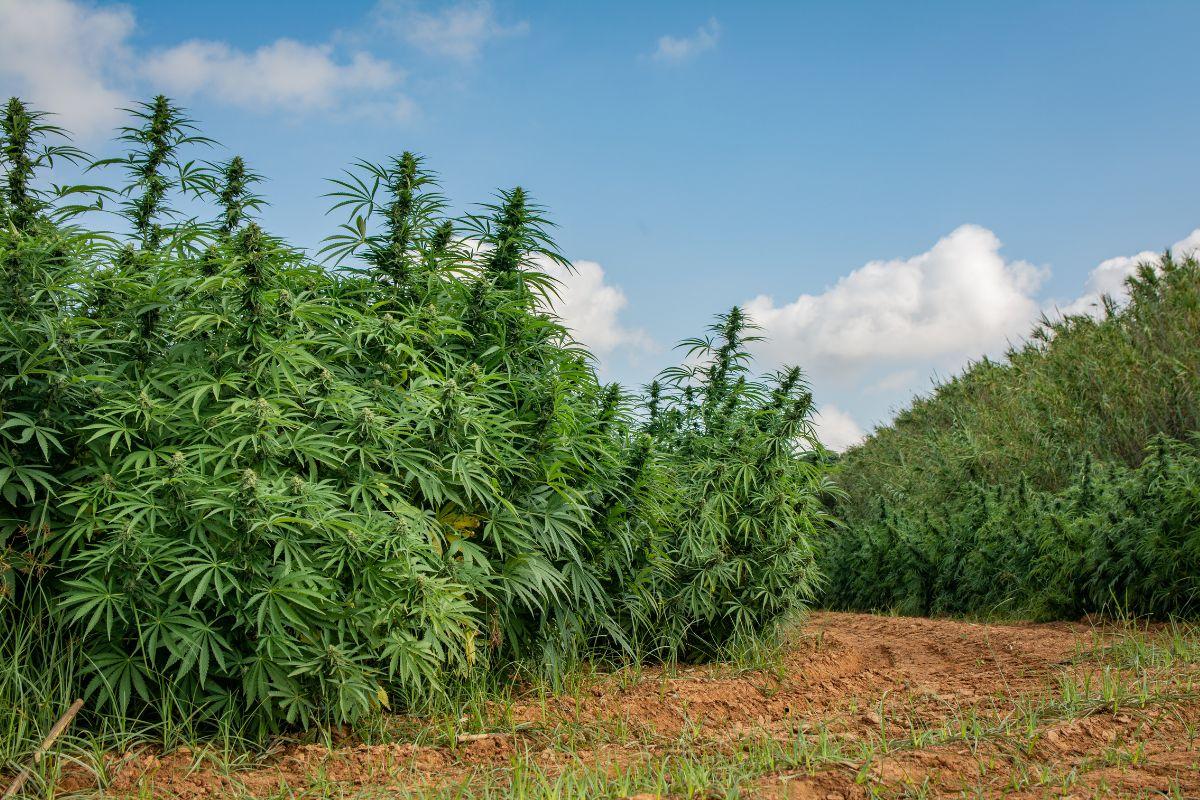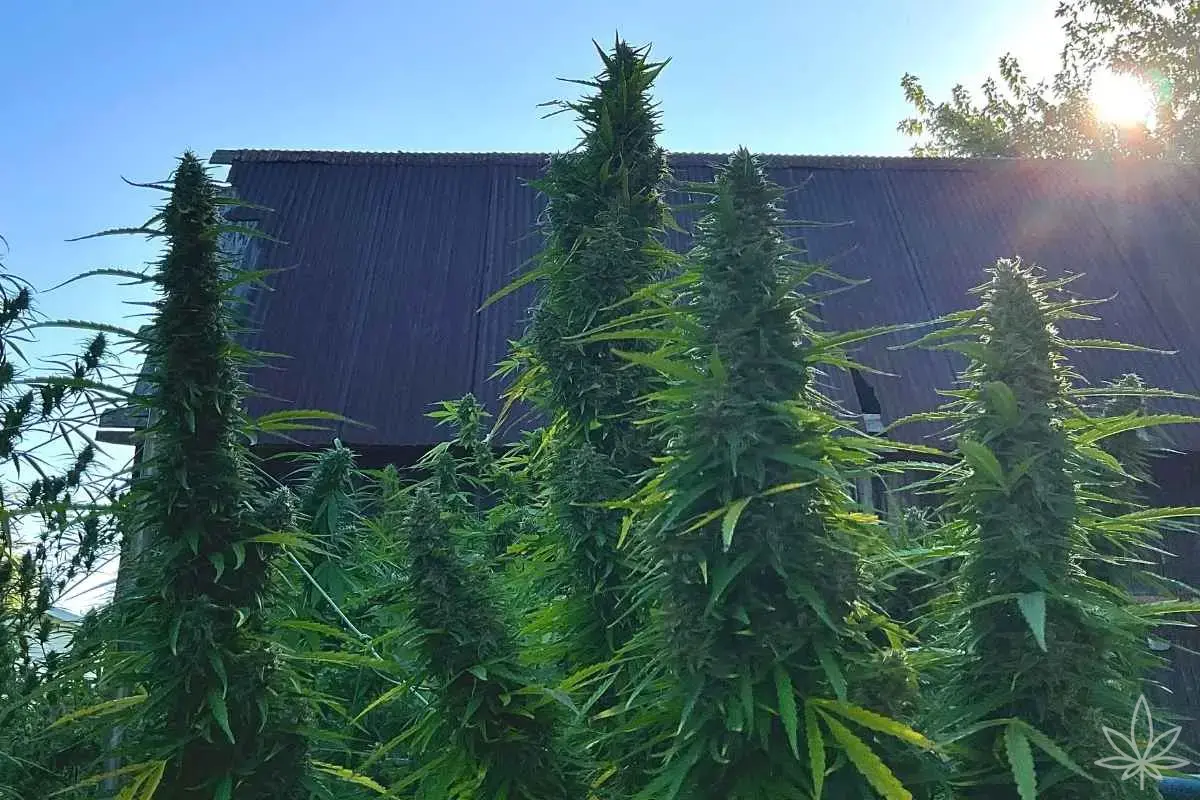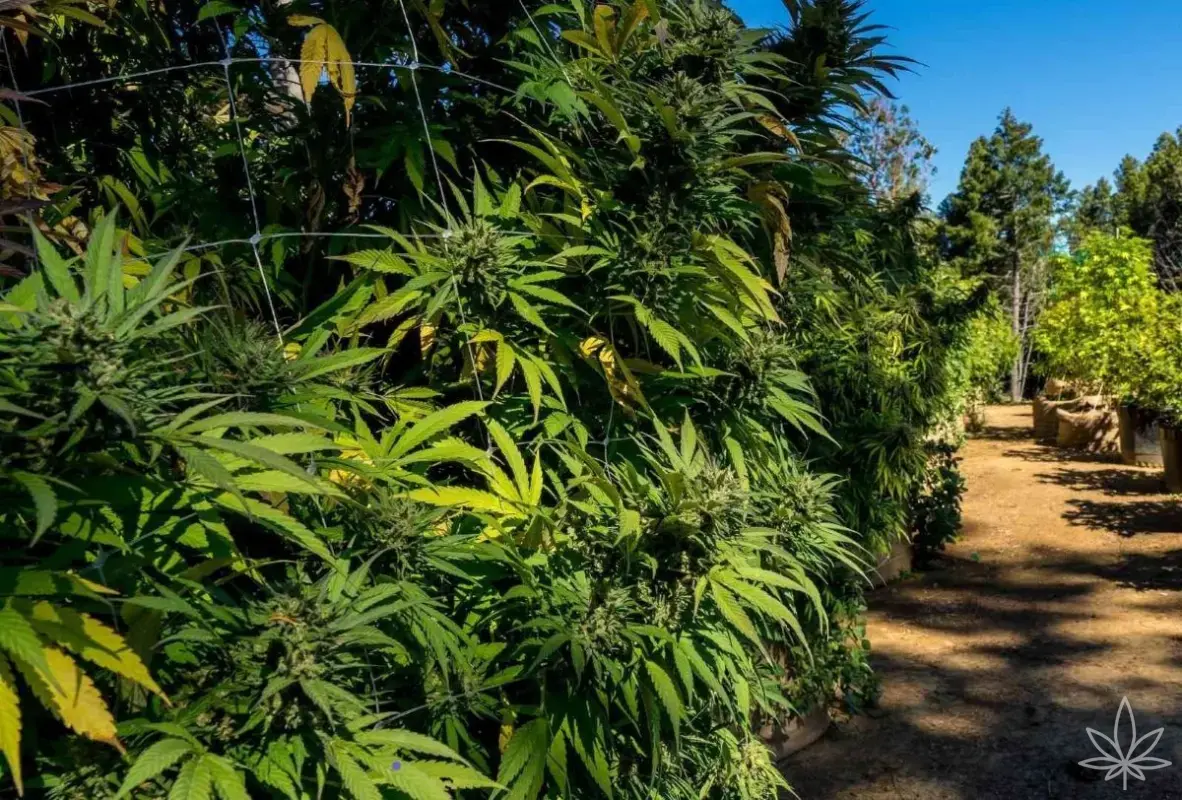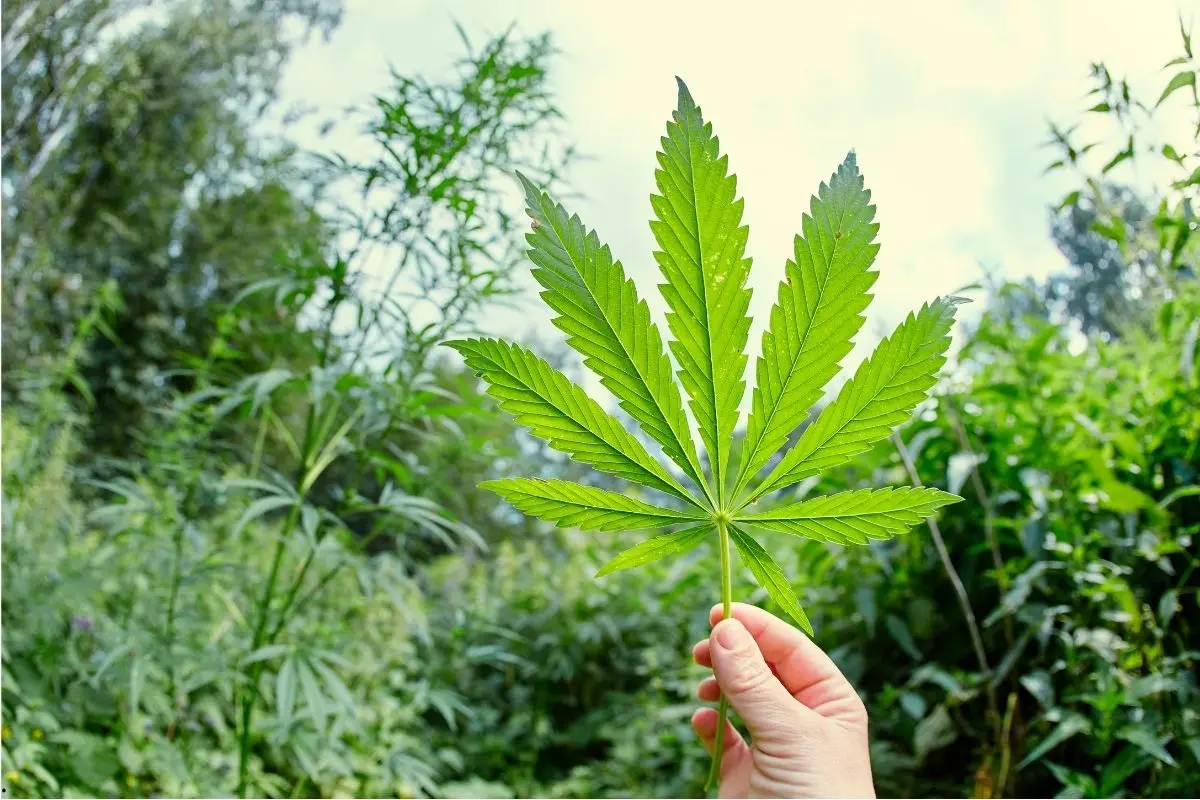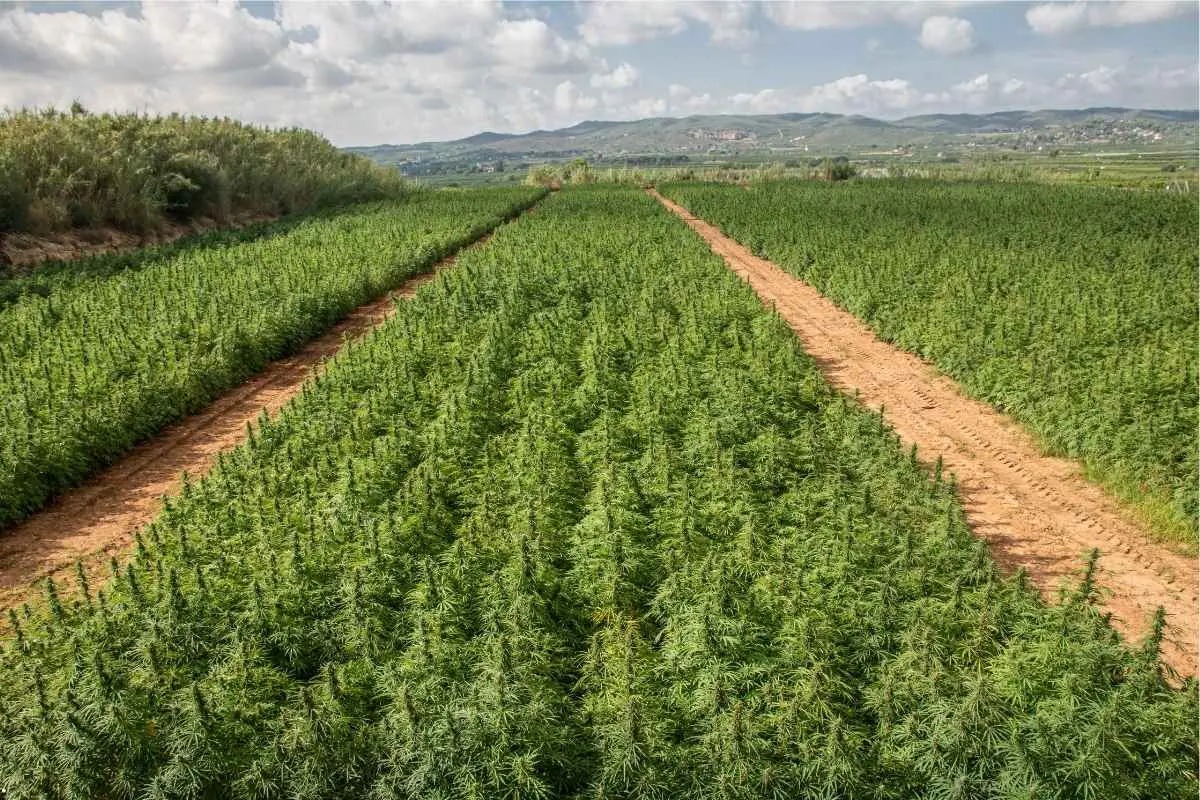Sun, wind, rain, real soil under the roots — outdoor growing tempts with freedom and zero electricity bills. But it can also be merciless: there’s only one season per year, the weather won’t ask for your permission, and diseases spread faster than notifications on your phone. If you’re wondering whether it’s worth stepping out of the grow tent and into a garden, allotment, or rural patch — this guide is for you.
Below, we’ll go through advantages and risks, yield potential, common diseases and pests, and a realistic difficulty rating — without the marketing fairy tales.
1) Why choose outdoor growing? The main advantages
Free sunlight and space. Obvious, yes — but in practice it means smaller bills, a lower carbon footprint, and no height limits (as long as neighbours and the law allow it). Under the open sky, plants build more biomass — with the right season and genetics, that translates into heavier harvests.
Terpene profile quality. Natural temperature swings, day–night differences, and full-spectrum sunlight often bring a deeper aroma and richer flavour. Not always, but often enough to notice.
Lower entry costs. Instead of LEDs and AC units, you’ll need a shovel, compost, and a few stakes. It’s not “free” — nets, supports, and maybe a rain cover add to the bill — but it’s still cheaper than high-intensity indoor growing.
Easier scaling. Want bigger plants? Give them more soil, space, and time. You’re not fighting for every centimetre of height like in a 60×60 cm grow box.
2) But… what can go wrong? Risks and challenges
Weather. Heat waves, long autumn rains, hail, storms. A sudden thunderstorm can flatten unsupported plants; two weeks of rain in September can invite botrytis (grey mold).
Season length and latitude. In Central Europe, the growing window is limited. Fast indicas and “early” hybrids will make it, but long-flowering sativas may not finish before autumn hits. Pick the wrong strain = beautiful plants you never get to harvest.
Night light pollution. Streetlamps, driveway floodlights, motion sensors — flowering plants need uninterrupted darkness. Persistent light leaks can cause reveg, delay flowering, or trigger hermaphroditism.
Neighbours, smell, and privacy. By August–September, the smell gets intense. On a small lot or in a built-up area, that can mean unwanted attention. Theft is also a real risk — more common than many think.
Animals and “wild helpers.” Slugs, deer, mice, martens, dogs — the list is longer than you might expect. Young seedlings are prime snacks.
Legal status. Different countries, different laws. In some places outdoor growing is legal or tolerated; in others it’s not. Check your local regulations before planting a seed.
3) Yields: how much is “a lot” — and what’s realistic?
There’s no honest single number. Outdoor yield depends on:
- Genetics (flowering speed, structure, bud density)
- Start time (when you transplant outdoors and how big the plant is at that point)
- Soil and moisture (native ground, prepared bed, or large pot)
- Sunlight (4–5 h daily = survival; 8–10 h = strong yields)
- Autumn weather (a wet September = higher mold risk)
Rough range with decent conditions and a quick strain: anywhere from a few hundred grams to over a kilogram per plant. True “tree” yields happen, but only with perfect weather, early-finishing genetics, rich soil, and active support (nets, pruning, disease prevention).
For a first season, don’t expect records. An honest 0.3–0.8 kg per plant with good sun and care is already a win.
4) Susceptibility to diseases and pests (and what to do about it)
Fungal/microbial:
- Powdery mildew (white coating on leaves): thrives in dense foliage and high humidity without airflow.
Prevention: pruning lower growth for airflow (never in wet weather), spacing between plants, pre-emptive sulfur/silica or biological sprays. - Botrytis / grey mold (rot from inside buds): public enemy number one at season’s end. Dense, “fat” colas + prolonged rain = trouble.
Prevention: supports/nets to keep plants upright, shaking off water after rain, avoiding excess nitrogen once flowering starts, choosing looser-bud varieties.
Pests:
- Spider mites: love dry, hot weather; leaves get speckled, webs appear.
Actions: early leaf underside misting, predatory mites, horticultural oils (never under strong sun). - Aphids, thrips, whiteflies: sap-suckers that spread pathogens.
Actions: sticky traps, botanical sprays/oils, beneficial insects (ladybirds, lacewings), site hygiene. - Caterpillars: bore into buds, inviting mold.
Actions: regular inspection, manual removal, fine insect netting in late summer. - Slugs/rodents/deer:
Actions: stem guards, slug traps, repellents, small mesh fencing.
Golden rule:prevention beats cure. Outdoors, “reactive” treatments are often too late.
5) Difficulty level: who is outdoor growing for?
For the patient and committed. Indoors you see results in 8–10 weeks; outdoors it’s a marathon from spring to autumn. If you like quick turnover, outdoor will test your mindset.
For those with full-sun spots. Less than 6 hours of direct sunlight means compromise — the plant will survive, but not thrive.
For those who can accept loss. Sometimes floods, hail, or endless rain win. You need a plan B and the emotional buffer to say, “I did all I could.”
6) Strain choice for outdoor (Central Europe focus)
Fast and tough. Look for fast/early/quick varieties, or indica-dominant hybrids that finish by mid/late October. Avoid pure long-flowering sativas unless you’re in a very mild climate.
Autoflowers in the north. You can fit 2–3 short cycles (May–July, July–September), often avoiding autumn rains. Each plant may yield less, but overall it’s safer.
Bud structure. Looser, airier buds resist mold better in wet autumns than rock-hard colas. Less “Instagram-perfect” flowers can mean more jars filled.
7) Soil, feeding, and water
Native soil vs. prepared bed:
- Minimum: enrich with compost, basalt/silica rock dust, perlite; check pH (6.2–6.8).
- Better: dig 50–70 L holes and fill with a rich mix (garden soil + compost + coco/perlite + slow-release organic nutrients).
- Large pots (50–100 L): more control, less risk of waterlogging after rain, movable for sun positioning.
Mulching: straw/bark/compost on top reduces evaporation, stabilises soil temp, feeds microbes.
Watering: better to water deeply and less often than a little every day. In heatwaves, drip irrigation helps; in pots, water until slight runoff, then wait until the top layer dries well. Wetting agents can help in drought.
Feeding: outdoors, less is often more. Too much nitrogen after flowering starts = leafy jungle + mold risk. Keep it simple with veg/flower bio feeds + calcium/magnesium if water is soft.
8) Light and location (what matters most)
Sun: aim for 6–8+ hours of direct light daily. South-facing is ideal; east–west is fine if midday isn’t shaded. Avoid wind tunnels.
Dark: nights must be dark. If there’s light pollution, consider non-intrusive screening (mesh/opaque panels) without annoying neighbours.
Airflow: plants shouldn’t sit in stagnant air. Space them out, clear lower growth, and use supports to open the canopy.
9) Techniques for yield, health, and stability
Supports and nets: stakes, bamboo, circular cages — all prevent stem breakage and keep the plant open for airflow.
Topping/FIM/LST: gentle training in June–July spreads the canopy, reduces height, and boosts light penetration. Avoid heavy cuts in August.
Mycorrhiza and silica: beneficial fungi improve water/nutrient uptake; silica strengthens cell walls for better stress resistance.
Defoliation with care: remove only non-productive, shaded leaves — never strip the plant bare.
10) Outdoor calendar (Central Europe: DE/PL)
- April–May: germinate indoors/greenhouse; transplant after frost risk (mid-May).
- June–July: vegetative explosion — training, supports, first pest prevention.
- August: preflower — adjust feeding (less N, more K), watch for pests/caterpillars.
- Sept–Oct: finish for fast strains; in wet weather, use mobile covers, shake water off buds, remove mold spots immediately.
Autoflowers: May start = July harvest; July start = September harvest. Occasionally a third early-spring run is possible in mild years.
11) When weather turns: plan B
Covers and shelters: simple polycarbonate roof structures can save buds from constant drizzle. Ensure open sides for airflow.
After rain — act: gently shake plants to remove water from flowers.
Selective harvest: if top colas rot, take what’s ready instead of risking the whole plant.
12) Ethics and neighbours
Be considerate: don’t plant right by the fence, use companion plants (lavender, rosemary, dahlias) to mask visuals, and avoid loud early-morning spraying. Remove male plants early — pollen is not neighbour-friendly.
13) Outdoor vs indoor: a quick compare
- Cost: outdoor cheaper in electricity, pricier in weather management.
- Control: indoor wins; outdoor follows nature’s pace.
- Quality: depends on season, skill, and genetics — great outdoor can beat poor indoor and vice versa.
- Security: outdoor = visibility and smell; indoor = electrical and heat footprint. Both have risks.
14) Conclusion: is outdoor for you?
Outdoor is a marathon with a prize at the end. With a good site, suitable strain, and acceptance of unpredictability, you can get yields impossible in a small tent. But if you need absolute consistency, stick to indoor or start with short summer autoflower runs.
If the weather doesn’t play nice, so be it. The next year may make up for it. And when you hold those fragrant, sun-kissed buds, you’ll understand why so many growers return to outdoor despite all the “buts.

